Roslyn Air National Guard Station
209 Harbor Hill Road, East Hills
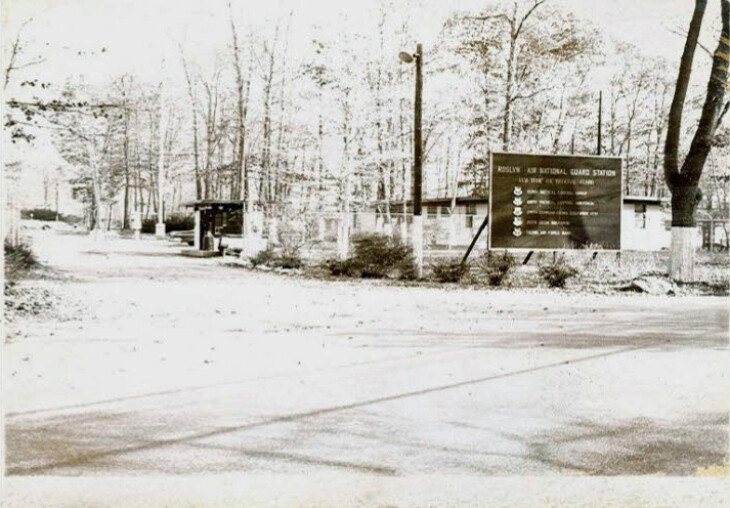
The History of Roslyn Air National Guard Station 1941-2000 by Jan Klebukowski
Click here for a comprehensive history of the Roslyn Air National Guard Station
[Note: Mr. Jan Klebukowski is a Master Sargeant in the New York Air National Guard. A resident of Glen Cove, he was stationed at the Roslyn ANG base from 1988 until its closing in 2000. Sargeant Klebukowski has done extensive research on the history of the former Roslyn Air National Guard Base and has donated research materials to the Bryant Library Local History Collection.]
The history of Roslyn Air National Guard Station goes back to 1941 and the start of World War II. It was then that the James A. Lyons American Legion Post at Roslyn, NY started the first Air Defense Program at the local Roslyn High School. This program was run by civilian volunteers whose mission was to scan the skies, looking for any possible enemy aircraft flying in the area, and then report to Headquarters at Mitchel Field, Long Island, NY.
In 1943, German U-Boats were spotted off the coast of Long Island and need for a more permanent home for the Air Defense mission was identified. Eventually it led to the Army leasing 250 acres of the former Clarence H. Mackay Estate in East Hills for $17,000 per year. The property was owned by John W. Mackay, son of Clarence and Katherine Mackay, and was situated on the highest spot in Nassau County. The sight was affectionately called “Camp Mackay.”
The Army at Mitchel Field activated the 1St Fighter Command at Roslyn to modify the land for military use. With an entrance on Harbor Hill Road, members of the unit built 9 buildings and access roads. For purposes of secrecy, the base was intentionally designed not to look like a military base. At the end of World War II, the 1st Fighter Command was eventually deactivated and by 21 March 1946, caretaker squadrons were activated at Mitchel Field and sent to Roslyn to take over operations.
During the Korean War, the 26th Air Division was activated at Roslyn to continue monitoring air operations in the area. At the height of the unit’s operation, there was over 260 military members and 32 civilian personnel stationed at Roslyn full time! Their mission was to monitor air operations in the area, as well as receive information from other bases within the entire northeast United States. This unit was also briefly involved in “Project Blue Book,” which was the U.S. Air Force investigations into UFOs.
In 1953, the original 250 acre station property was cut down to only 50 acres, which was purchased by the U.S. government. The excess property, along with most of the remaining Mackay Estate, was later sold off to developers who then built luxury homes. The largest residential development on former Mackay Estate property is Country Estates at East Hills. Eventually in 1958, a new Air Defense system called SAGE (Semi - Automatic, Ground Environment) equipment was invented by the military, which led to the first closing of the Roslyn base.
The base remained closed until in 1959, when the Air National Guard took interest in the 50 acre property as a semi-permanent training sight for tactical and communication training units. Five Air National Guard Units moved there and started to transform the land for their training purposes. These units were the 152nd Tactical Control Squadron, 106th Tactical Control Group, 213th Communication Control Squadron, the 274th Communications Squadron, and the 552nd Air Force Band. By 1966 there were 34 buildings, including a dispensary, dining hall, motor pool and warehouse.
During the base’s 41 year history serving the Air National Guard’s needs, its units have performed jobs at overseas locations, as well as at many locations within the US. These included Cape Canaveral, FL setting up communications for the US Space Program, various communications projects in the US and in Puerto Rico, Japan, Germany, Italy, Greece, United Kingdom, Canada, Spain, Portugal, Egypt, Turkey, Honduras, and Korea. During the height of the Vietnam War, the base became a site for many anti-Vietnam war demonstrators who used to picket at the front gate.
The Roslyn base also helped provide local community support for emergency services during local emergencies, such as providing shelter during many major storms, building a playground out of old tires and telephone poles, as well as giving medical assistance to a driver involved in a car accident. Although seemingly a fixture in the community, the base was not immune to a round of recent government base closures. In 1995 President Clinton signed a bill that included Roslyn on its list of permanent base closures. On hearing this news, the Village of East Hills organized an effort to purchase the property from the federal government. On 21 April 2000, the 50 acre property was approved for transfer to the Village of East Hills and on 9 December 2000 the people of the Village of East Hills and members of the military gathered to celebrate Transfer Day. On that day the New York State Air National Guard lowered their flag and formally handed over control of the former base to the people of the Village of East Hills.
_______________________________________________________________________________________
History of the Park at East Hills
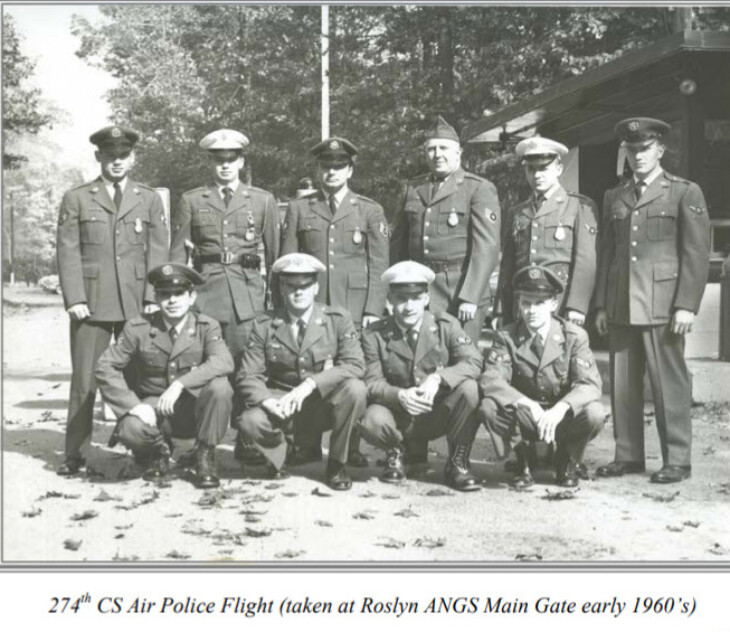
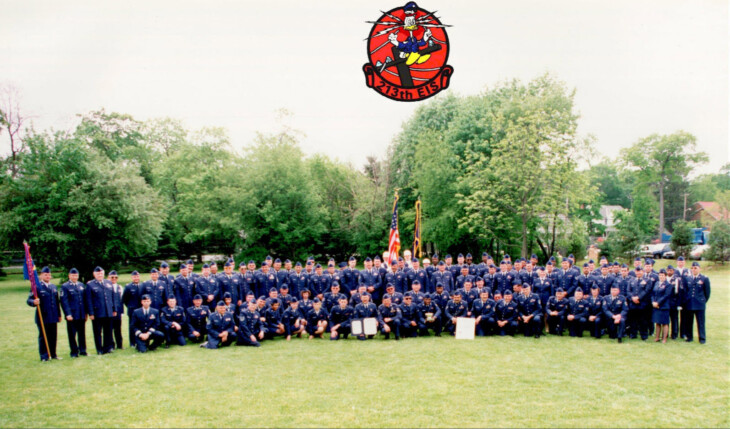
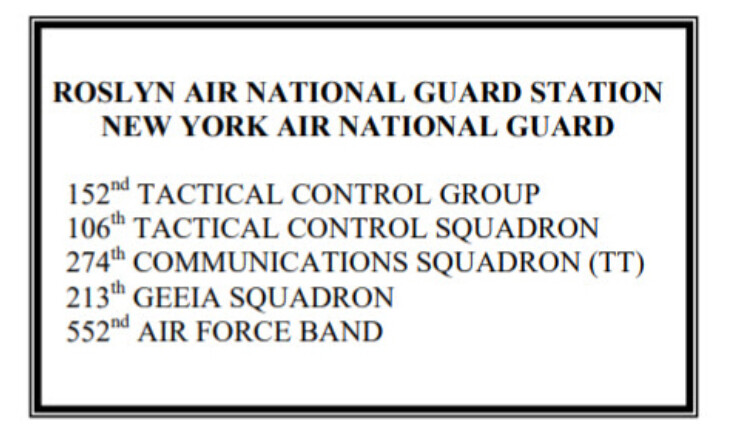
The squadrons based at the Roslyn Air National Guard Station
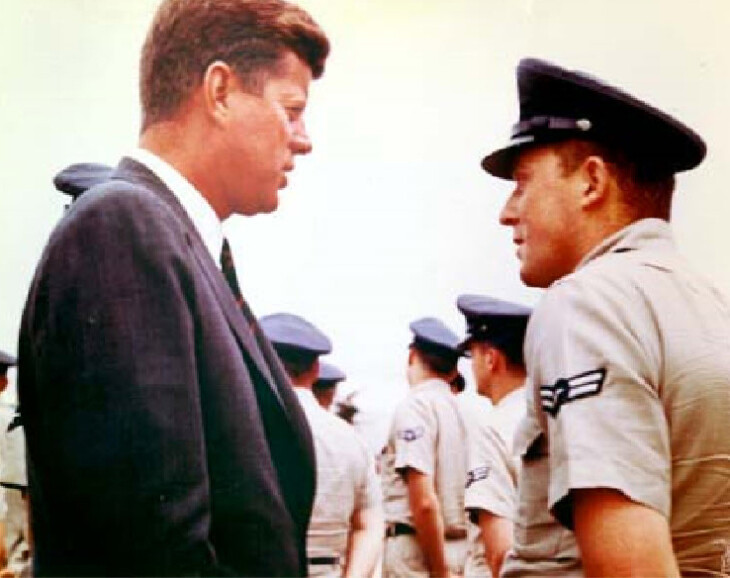
President John F. Kennedy visited the Roslyn Air National Guard Station during the height of the 1961-1962 Berlin crisis.
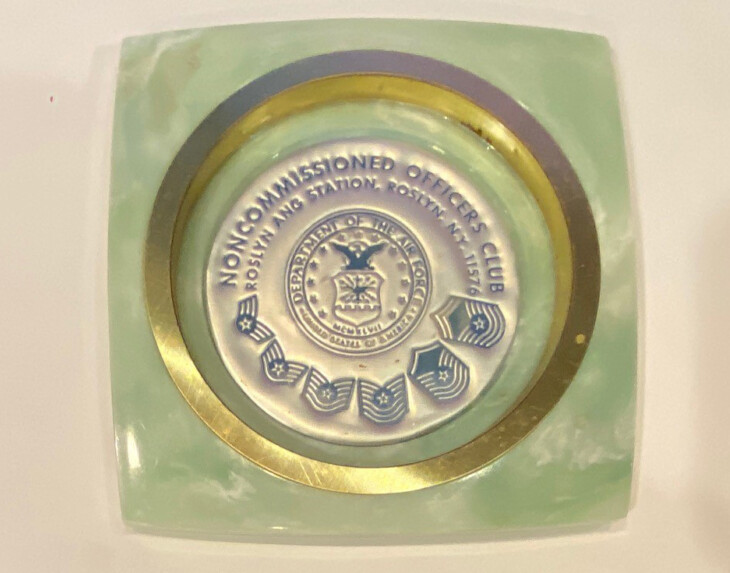
A coaster from the Noncommissioned Officers Club
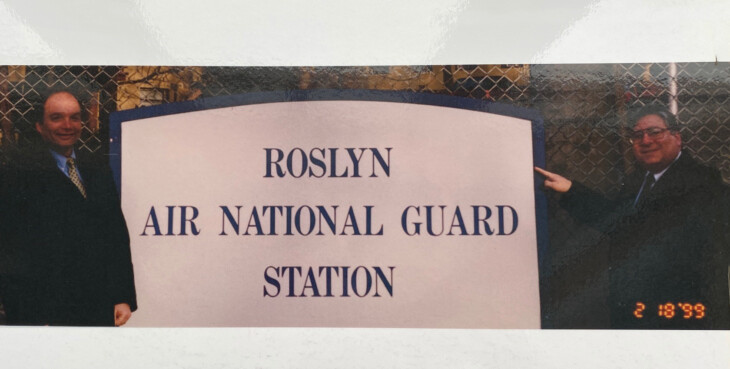
Mayor Michael Koblenz (right) and Village Trustee Gary Leventhal at the Roslyn National Guard Station before it was taken over by the Village of East Hills (February 18, 1999).
History of the Park at East Hills.
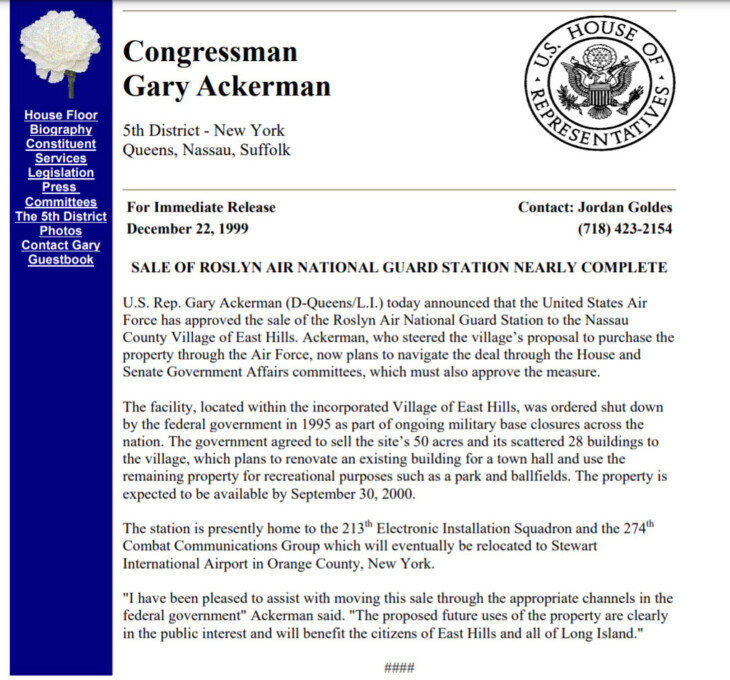
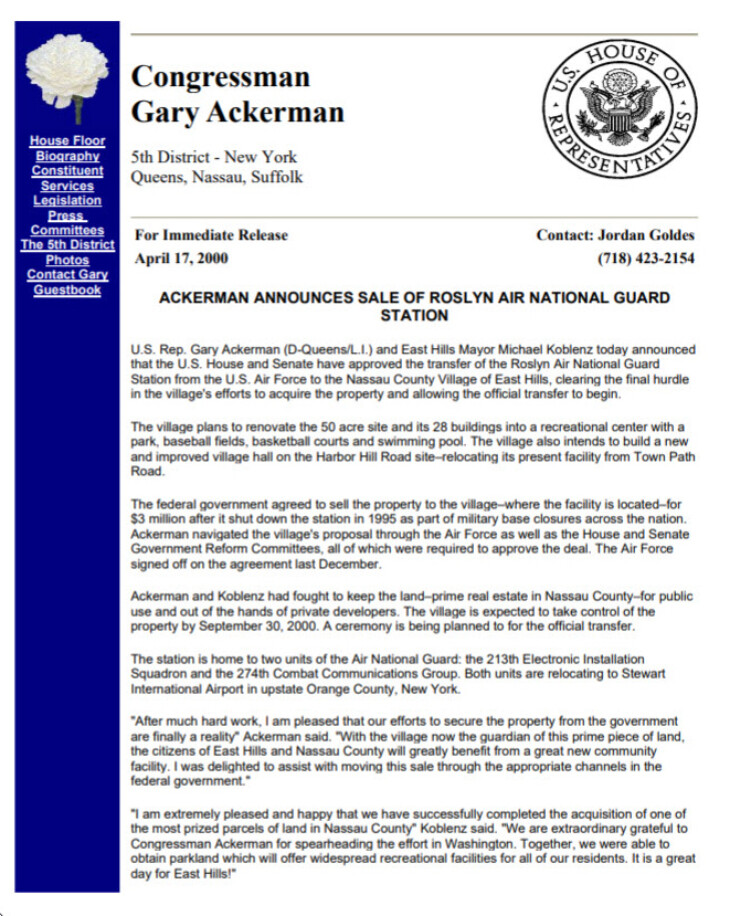
Press release by Congressman Gary Ackerman concerning the sale of the Roslyn ANG Station.
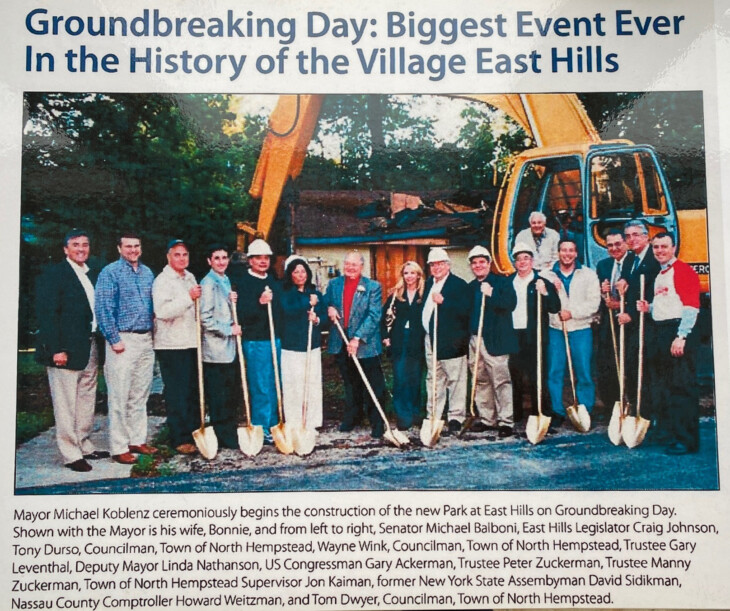
Groundbreaking Day (September 19, 2004)
3 Comments
I attended Wheatley High in Old Westbury graduating in 1968. We trained and ran against Roslyn High at RANG station which was the second hardest course we ran. Wheatley won the state championship in 1967.
I went to Division Ave HS in Levittown and ran against Roslyn and Joe Galano at the ANG site in 1969. The course was by far the toughest I ran in in 4 years of XC. Going up the big hill for the second time was a killer. Roslyn was our conference rival. We beat them in the dual meet and Division went on to win the NYS championship in 69 and again in 70. Roslyn was a good team and our coach Howie Pivnick had a lot of respect for them and Joe Galano. Pivnick took us up to Roslyn the week before the dual meet so we could work out on the course and know what to expect- it worked.
The ANG site was used by RHS for the cross country team. The perimeter of the base marked the rolling hill course 2.5 mile course (2 laps) and included the giant hill by harbor hill rd that was infamous for both home and visiting high school teams. I competed there poorly from 68-70. RHS boasted a state champion Joe Galano during that period.
Herb, on May 30, 1970, the New York Times reported that at the Nassau County track championships :
Two meet records were set. Joe Galano of Roslyn outlasted Cliff Mandel of Sewanhaka to capture the twomile run in 9:19.8 Syosset's mile relay clocked 3:25.5 for the other mark.
https://www.nytimes.com/1970/05/31/archives/marman-clocked-in-1524-for-880-sewanhaka-ace-upsets-paul-in-nassau.html